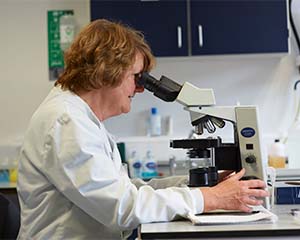04 May 2018
The new position on veterinary scanning surveillance suggests opportunities to modernise and optimise the existing surveillance network
After
a year of evidence gathering and analysis the British Veterinary Association
(BVA) has set out its comprehensive vision for animal health and disease
monitoring in the UK and is calling on UK Governments to modernise and enhance
the current surveillance networks.
BVA's
position on veterinary scanning surveillance explores how the UK Governments,
the veterinary profession and other key stakeholders can work collaboratively
to enhance the UK's disease surveillance networks. To develop the paper, the
BVA surveillance working group collected evidence from animal health and
disease monitoring experts across species areas and surveyed 655 vets to explore
how the profession values and engages with surveillance.
John
Fishwick, President, British Veterinary Association, said:
“Until
now, BVA has always championed a robust surveillance network, but we've never
set out our vision for how surveillance in the UK should look. Our position
paper aims to do just that, recognising the value that all members of the
veterinary profession add by contributing to animal health and disease
monitoring in all its forms, be that production animal, equine, wildlife or
companion animal.
“We
also call on the UK Governments to work collaboratively with the profession to
modernise and enhance the UK's disease surveillance networks across all
species. This is not just about protecting the resources currently spent on the
existing system, it is about thinking innovatively about potential new
approaches to disease surveillance. This means ensuring we are using all the
available data and evidence to protect both large and small animals in the UK
from new, emerging and endemic disease.”
In
recent years BVA has repeatedly voiced members' opposition to any further
reduction in the surveillance network in England and Wales, Scotland and
Northern Ireland. The new position expands on this by suggesting new
opportunities to modernise and optimise the existing surveillance network
through:
-
Maintaining the current level of Government resource spent on the scanning
surveillance networks - Adopting new approaches to data collection and feedback
- Optimising appropriate skills and expertise
- Rethinking traditional approaches to funding and coordination
- Articulating the value of surveillance reporting to the veterinary profession
and other stakeholders through education to increase awareness and
participation - Working collaboratively with stakeholders to explore innovative communication
strategies
Chair
of the BVA surveillance working group, Kate Sharpe, said:
“The
profession's commitment to the role of the veterinary surgeon as a public
guardian across all species enables the continual monitoring for endemic
disease and by recognising the unusual, helps to identify new and emerging
threats that need further investigation. Government veterinary surgeons play an
invaluable role providing a holistic service to private veterinary surgeons and
practices and escalating any arising concerns through the appropriate channels
to ensure action is taken.
“But
the success of our surveillance networks relies on people and relationships
within them, as well as a sound knowledge of when, what, how and who to report
to. With this in mind, the BVA position paper aims to identify areas in current
Government surveillance networks that could be improved, and how vets can
derive increased value by contributing to animal health and disease monitoring
activities and using the reports generated.”
As
a first step BVA is looking to optimise its own communications on surveillance,
updating the website and contacting every member with advice on how they can
‘kickstart' their own engagement with existing networks.



